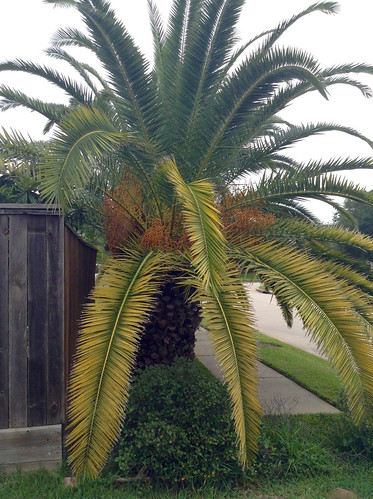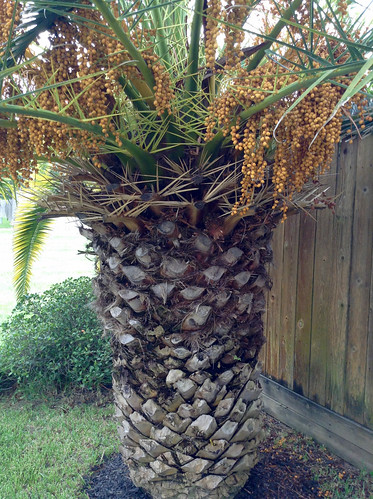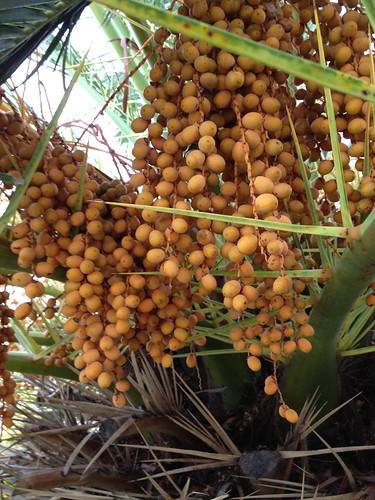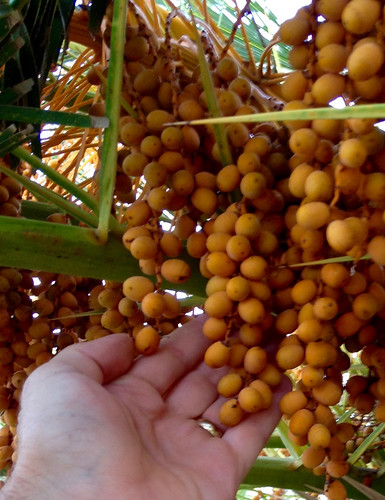Abundance: uncommon
What: fruit, flowers, sap
How: fruit raw, dried, cooked; flowers raw; sap straight, fermented, or evaporated to syrup or sugar
Where: landscaping
When: fall
Nutritional Value: calories
Canary Island date palm.


Canary Island date palm base.

Canary Island date palm trunk.

Trunk with almost-mature fruit.

Canary Island date palm crown.

Canary Island date palm needle-type leaf. Note the alternating pattern.

Almost ripe fruit.


These palms usually remain short and squat for ten years or more before growing taller to their final height of thirty to sixty feet. The leaves are long like those of the Queen palm rather than fan-shaped.
Fall is when the fruit appear on clusters of long strands. They are yellow-orange oval, 3/4" long, flesh is sweet but very thin over a large seed making it undesirable as snacking date. The preferred utilization of these dates is conversion to jelly...or wine! Woohoo!
A good palm oil can be pressed from its seeds using a nut press.
The sap is very sweet and can be drank as is, fermented into palm wine, or evaporated down to palm syrup or sugar. Traditionally it is collected by carefully carving a bowl-shaped depression in the tree's crown in the late afternoon or evening. The sap collects in this depression overnight and is gathered in the morning. If left exposed to sun and air it will quickly spoil. Please note, carving out the crown of the tree in this manner will likely result in the palm dying. There has been some luck/non-tree death with cutting the young fruit stalks (inflorescence spadix) in early summer and collecting the sap from them.
Buy my book! Outdoor Adventure Guides Foraging covers 70 of North America's tastiest and easy to find wild edibles shown with the same big pictures as here on the Foraging Texas website.

